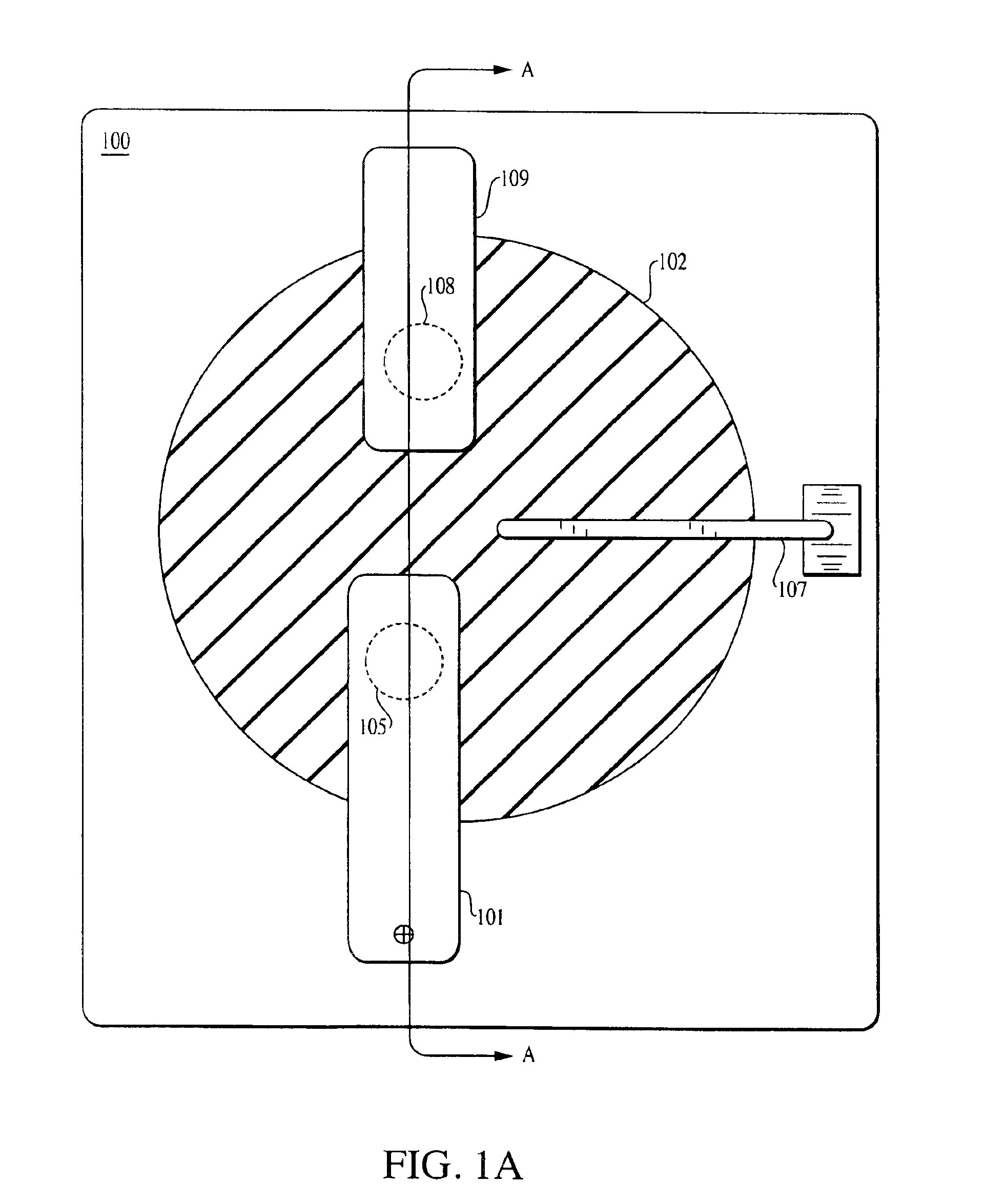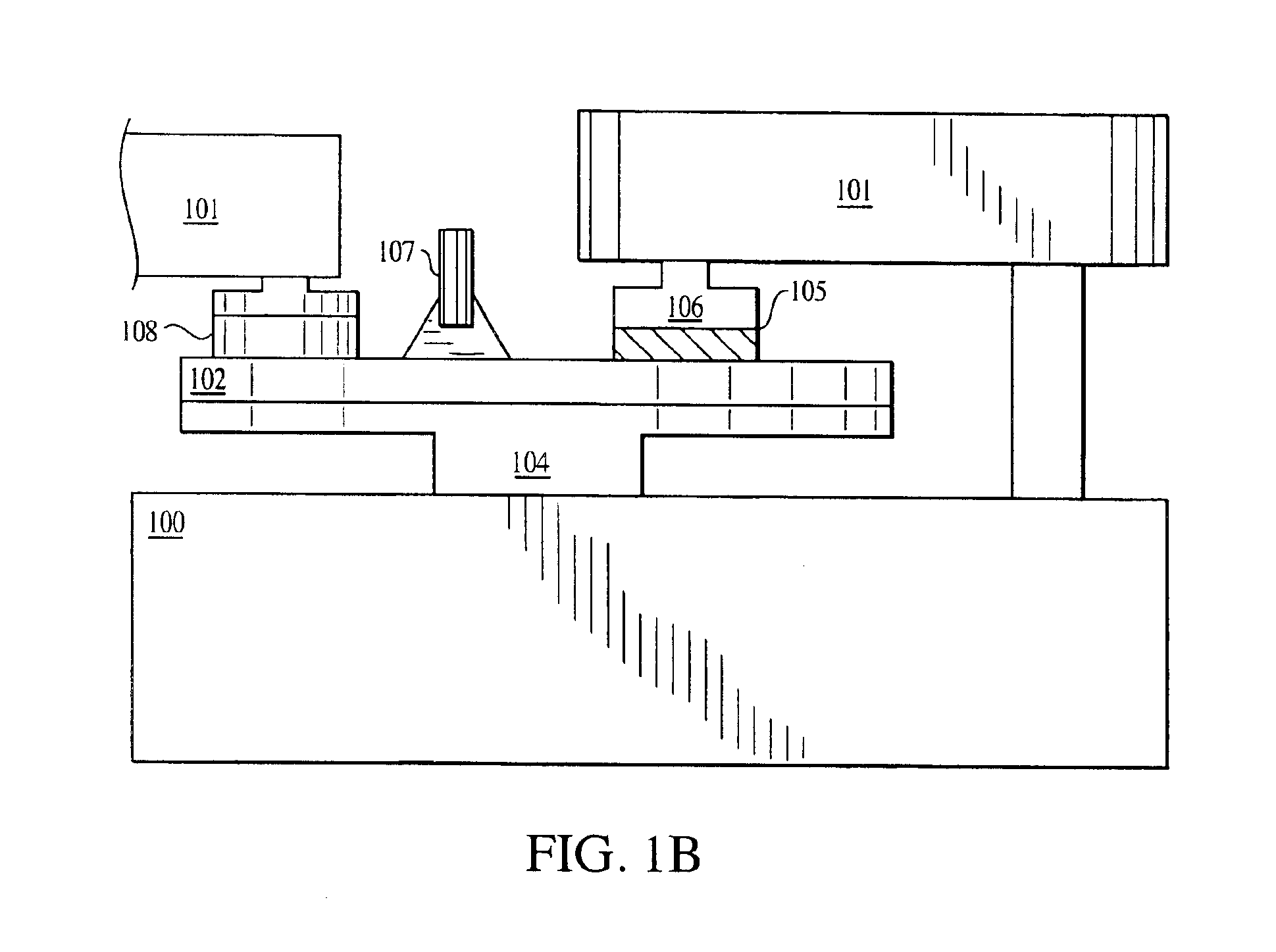Control of chemical mechanical polishing pad conditioner directional velocity to improve pad life
a technology of polishing pad conditioner and directional velocity, which is applied in the direction of total factory control, abrasive surface conditioning devices, lapping machines, etc., can solve the problems of premature wear, excessive polishing pad conditioning, and loss of roughness and elasticity of polishing pads, so as to prolong increase the number of semiconductor wafers. , the effect of prolonging the working life of pads
- Summary
- Abstract
- Description
- Claims
- Application Information
AI Technical Summary
Benefits of technology
Problems solved by technology
Method used
Image
Examples
Embodiment Construction
[0071]Novel methods for feed forward and feed back controls of the CMP process for maximizing the life of the polishing pad are described herein. Extended pad life results in reduced down time for the CMP process because the polishing pad can polish more wafers over a longer period of time without requiring replacement or adjustment (e.g., removal of the damaged portion of the pad). The term wafer is used in a general sense to include any substantially planar object that is subject to polishing. Wafers include, in additional to monolith structures, substrates having one or more layers or thin films or other architecture deposited thereon.
[0072]The polishing pad surface needs to maintain a certain level of roughness and elasticity in order to provide the required wafer material removal rates in a CMP process. The roughness and elasticity of the pad decreases with successive wafer polishes, thereby reducing the wafer material removal rate. Initial polishing pad surface conditions (asp...
PUM
| Property | Measurement | Unit |
|---|---|---|
| Time | aaaaa | aaaaa |
| Speed | aaaaa | aaaaa |
| Frequency | aaaaa | aaaaa |
Abstract
Description
Claims
Application Information
 Login to View More
Login to View More - R&D
- Intellectual Property
- Life Sciences
- Materials
- Tech Scout
- Unparalleled Data Quality
- Higher Quality Content
- 60% Fewer Hallucinations
Browse by: Latest US Patents, China's latest patents, Technical Efficacy Thesaurus, Application Domain, Technology Topic, Popular Technical Reports.
© 2025 PatSnap. All rights reserved.Legal|Privacy policy|Modern Slavery Act Transparency Statement|Sitemap|About US| Contact US: help@patsnap.com



